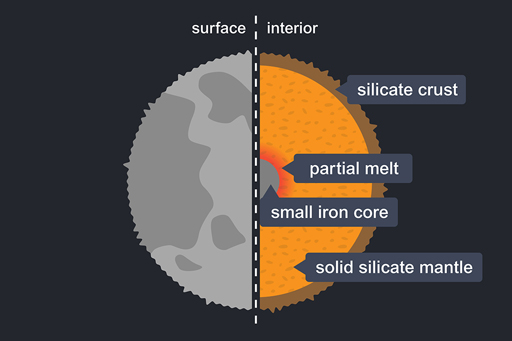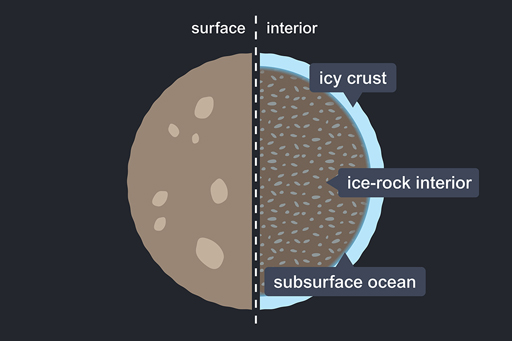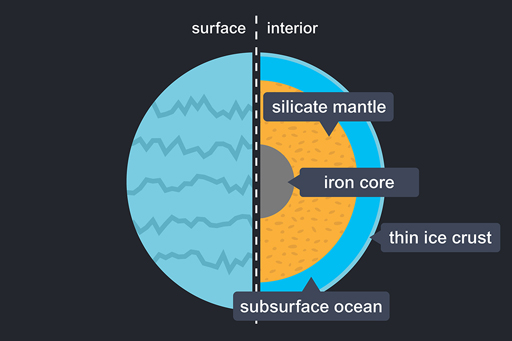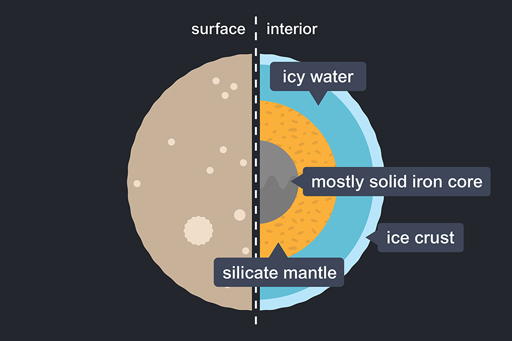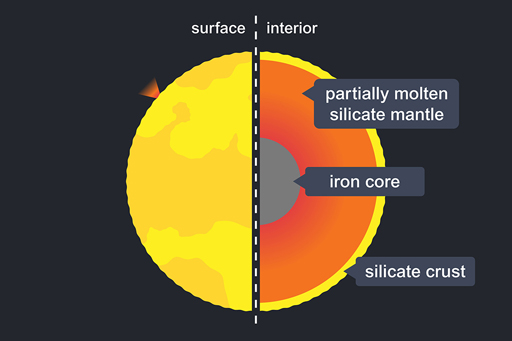1.1 Inside a moon
Here’s your chance to learn what scientists think the internal structures and compositions of the Moon and Jupiter’s four Galilean moons are like.
Activity 1 Structures of the Moon and Jupiter’s four Galilean moons
For each diagram, try to work out which parts of each moon’s structure the empty labels are referring to.
When you’re ready, click the ‘Reveal answer’ link below each diagram to see a fully labelled version.
The Moon
The Moon is a differentiated body: it has a geochemically distinct crust, mantle and core. It also has a largely or entirely solid iron-rich core with a radius of 300 km. The lowest part of the mantle may be partially molten.
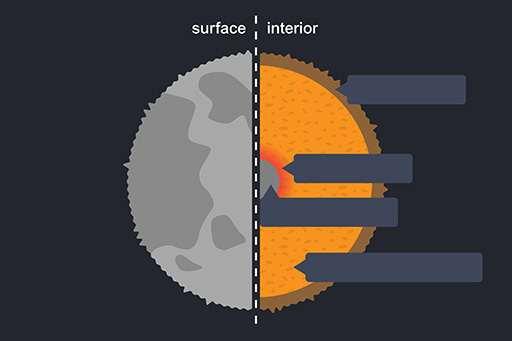
Try to decide where each of these labels belongs:
- solid silicate mantle
- silicate crust
- small iron core
- partial melt.
Answer
Callisto
Callisto is the third-largest moon in the Solar System and it appears to lack a fully differentiated core. Callisto’s battered surface lies on top of a cold, stiff and icy lithosphere that is between 80 and 150 km thick. A salty ocean may lie beneath the crust, indicated by studies of the magnetic fields around Jupiter and its moons.
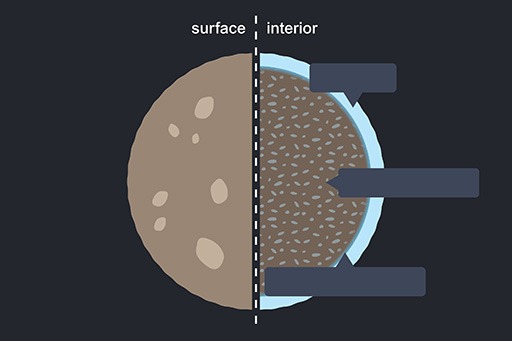
Try to decide where each of these labels belongs:
- ice-rock interior
- icy crust
- subsurface ocean.
Answer
Europa
It is believed that Europa has an outer layer of water around 100 km thick, some as frozen-ice upper crust and some as liquid ocean underneath the ice. Below the ocean, occupying most of Europa’s volume, is a rocky interior. This probably contains metallic iron core at the centre.
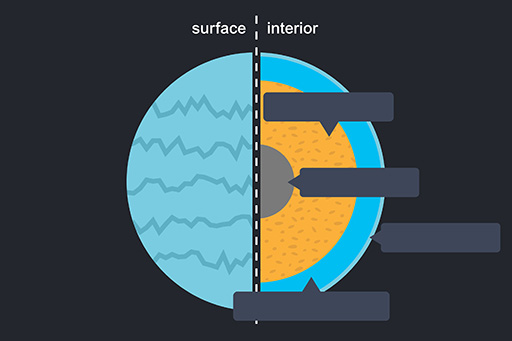
Try to decide where each of these labels belongs:
- silicate mantle
- iron core
- subsurface ocean
- thin ice crust.
Answer
Ganymede
Ganymede is composed of approximately equal amounts of silicate rock and water-ice. It is believed to be a fully differentiated body with an iron-rich core. A saltwater ocean is believed to exist nearly 200 km below Ganymede’s surface, sandwiched between layers of ice.
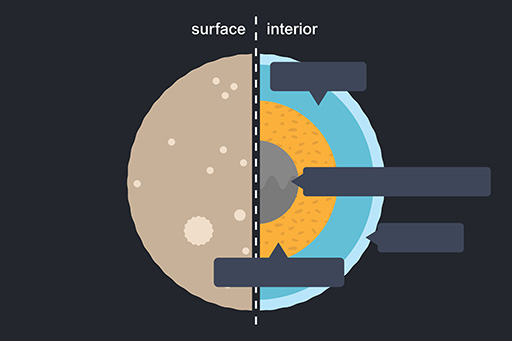
Try to decide where each of these labels belongs:
- silicate mantle
- mostly solid iron core
- ice crust
- icy water.
Answer
Io
Io is composed primarily of silicate rock and iron. Io is closer in bulk composition to the terrestrial planets than to other moons in the outer Solar System, which are mostly composed of a mix of water-ice and silicates. Models based on measurements of density and mass distribution suggest that its interior is differentiated between a silicate-rich crust and mantle, and an iron- or iron-sulfide-rich core. Io’s metallic core makes up approximately 20% of its mass.
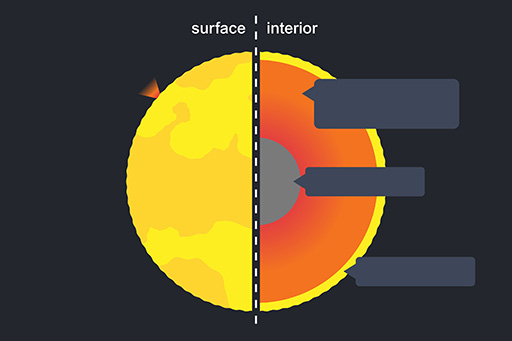
Try to decide where each of these labels belongs:
- partially molten silicate mantle
- silicate crust
- iron core.

